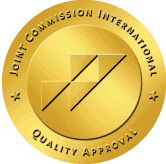When someone’s celebration turns into a medical emergency, recognizing the warning signs can literally save their life. You might think you know what alcohol poisoning looks like, but many people miss the subtle early indicators that signal when drinking has crossed from dangerous into life-threatening territory.
Alcohol poisoning affects thousands of people each year, occurring when your body simply can’t process alcohol fast enough to prevent toxic buildup in your bloodstream. Unlike a typical hangover, this serious condition creates symptoms that can persist for days or weeks, making recognition absolutely critical.
The signs aren’t always dramatic – sometimes they’re as quiet as irregular breathing or as concerning as confusion that won’t lift. Understanding these warning signals means you’ll know exactly when to call for help and potentially prevent a tragedy from unfolding.
Alcohol poisoning occurs when you consume more alcohol than your body can process, creating a toxic buildup in your bloodstream. Your liver typically metabolizes alcohol at a steady rate, but drinking large amounts quickly overwhelms this natural detoxification process.
When alcohol enters your bloodstream faster than your liver can eliminate it, your blood alcohol concentration (BAC) reaches dangerous levels. This toxic concentration affects your brain’s ability to control vital functions like breathing, heart rate, and temperature regulation.
Signs of alcohol poisoning manifest differently from typical intoxication effects. Your body produces acetaldehyde when breaking down alcohol—a substance more toxic than alcohol itself. This chemical compound contributes to the severe symptoms you experience during alcohol poisoning episodes.
The condition develops when your BAC reaches levels between 0.25% and 0.35%, though fatal outcomes can occur at concentrations as low as 0.20%. Can alcohol poisoning kill you? Yes—approximately 2,200 Americans die from alcohol poisoning annually, with men accounting for 76% of these deaths.
| BAC Level | Effects | Risk Level |
|---|---|---|
| 0.08% | Legal intoxication limit | Low |
| 0.15% | Severe impairment begins | Moderate |
| 0.25% | Alcohol poisoning threshold | High |
| 0.35%+ | Potentially fatal concentration | Critical |
Your blood alcohol concentration continues rising for 30-40 minutes after your last drink, meaning symptoms worsen even when you stop consuming alcohol. This delayed peak explains why alcohol poisoning decision to go to the hospital becomes critical—waiting for improvement often proves dangerous.
How much alcohol can kill you varies based on body weight, tolerance, and consumption speed. Generally, consuming 8-10 drinks within an hour creates life-threatening conditions for most adults. But factors like medications, food intake, and individual metabolism significantly affect these thresholds.
The condition differs from regular intoxication because it represents acute toxicity rather than temporary impairment. Your central nervous system becomes depressed to the point where automatic functions like breathing and circulation face serious disruption.
Recognizing the Signs of Alcohol Poisoning

Alcohol poisoning presents distinct symptoms that escalate beyond typical intoxication. These signs of alcohol poisoning often appear suddenly and worsen rapidly as your body struggles to process toxic alcohol levels.
Physical Symptoms
Your body displays several critical warning signs when alcohol poisoning occurs. Breathing becomes dangerously compromised with fewer than 8 breaths per minute or irregular patterns lasting 10 seconds or more between breaths. Your skin turns pale, clammy, or develops a bluish tint, particularly around your lips and fingernails, indicating oxygen deprivation.
Vomiting presents a significant risk as alcohol impairs your gag reflex, creating choking hazards on your vomit. Your body temperature drops dramatically, causing hypothermia, chills, and uncontrollable shivering. Your heart rate slows considerably, while seizures may occur without warning.
Loss of bladder and bowel control frequently accompanies severe alcohol poisoning cases. Your body’s automatic responses become dulled or completely absent, including protective reflexes that prevent choking. These physical symptoms indicate your body’s life-support systems are shutting down due to alcohol’s toxic effects.
Mental and Behavioral Signs
Mental impairment from alcohol poisoning extends far beyond normal intoxication and confusion. You experience severe disorientation and struggle to comprehend basic information or recognize familiar people and places. Maintaining consciousness becomes increasingly difficult as you drift in and out of awareness or fall unconscious entirely.
Stupor characterizes your mental state during alcohol poisoning, marked by extreme drowsiness and minimal responsiveness to external stimuli. Your coordination fails, making walking or basic movements impossible. Speech becomes severely slurred or stops altogether as your brain’s communication centers malfunction.
Your responses to questions or commands become delayed, inappropriate, or completely absent. Memory formation ceases during these episodes, creating gaps in recollection even if you survive the poisoning. These behavioral changes signal that alcohol has reached life-threatening concentrations in your bloodstream, requiring immediate medical intervention to prevent permanent brain damage or death.
Understanding Blood Alcohol Concentration and Risk Levels

Blood Alcohol Concentration (BAC) measures the percentage of alcohol in your bloodstream and directly correlates with your risk of alcohol poisoning. BAC levels determine the severity of symptoms you experience and indicate when alcohol consumption becomes life-threatening.
Your BAC continues rising for 30-40 minutes after you stop drinking, meaning symptoms can worsen even when you’re no longer consuming alcohol. This delayed peak makes alcohol poisoning particularly dangerous because you might feel relatively normal initially before experiencing severe symptoms.
Critical BAC Thresholds
| BAC Level | Risk Level | Symptoms |
|---|---|---|
| 0.08% | Legal intoxication | Impaired judgment, slurred speech |
| 0.15% | Severe intoxication | Loss of muscle control, vomiting |
| 0.25% | Life-threatening | Stupor, loss of consciousness |
| 0.30% | Potentially fatal | Coma, respiratory depression |
| 0.40%+ | Often fatal | Respiratory arrest, cardiac failure |
A BAC over 0.40% poses extreme danger and can cause coma or complete respiratory failure. But, fatal alcohol poisoning can occur at BAC levels as low as 0.20% depending on your individual factors.
Factors Affecting Your BAC
Several elements influence how quickly your BAC rises and your alcohol poisoning risk:
Body composition affects alcohol distribution throughout your system. People with higher body fat percentages reach dangerous BAC levels faster because alcohol doesn’t dissolve in fat tissue.
Gender differences impact alcohol metabolism. Women typically reach higher BAC levels than men when consuming equivalent amounts due to lower water content and different enzyme levels.
Food consumption significantly affects absorption rates. Drinking on an empty stomach allows alcohol to enter your bloodstream rapidly, increasing your risk of reaching dangerous BAC levels.
Medication interactions can amplify alcohol’s effects. Combining alcohol with opioids, sedatives, or even over-the-counter antihistamines creates compounding depressant effects that increase poisoning risk at lower BAC levels.
When BAC Becomes Deadly
Alcohol poisoning kills you by depressing your central nervous system beyond its ability to maintain vital functions. Your brain loses control over breathing, heart rate, and body temperature regulation when BAC reaches critical levels.
Breathing becomes dangerously slow or irregular when your BAC exceeds 0.25%. You may experience fewer than 8 breaths per minute or have breathing pauses lasting longer than 10 seconds. Complete respiratory arrest occurs when your brain can no longer signal your lungs to function.
Your heart rate slows dramatically at high BAC levels, reducing blood circulation and oxygen delivery to vital organs. This cardiac depression combined with respiratory failure creates the deadly combination that makes alcohol poisoning fatal.
Understanding these BAC risk levels helps you recognize when alcohol consumption transitions from intoxication to a medical emergency requiring immediate hospital intervention.
What to Do If Someone Shows Signs of Alcohol Poisoning

Alcohol poisoning demands immediate medical intervention as symptoms can rapidly worsen even after drinking stops. Your quick response can save someone’s life when alcohol reaches toxic levels in their bloodstream.
Immediate Actions to Take
Call 911 immediately, as alcohol poisoning is a life-threatening medical emergency. Emergency responders possess the equipment and training necessary to treat severe alcohol intoxication cases that require stomach pump procedures or IV fluid administration.
Keep the person conscious and upright if they remain responsive. Talk to them continuously and gently shake their shoulders to maintain alertness. Physical stimulation helps prevent them from slipping into unconsciousness, where breathing complications become more likely.
Position them on their side if they become unconscious or unable to sit upright. Place them in the recovery position with their head tilted slightly forward to prevent choking on vomit. This positioning allows fluids to drain from their mouth rather than blocking their airway.
Stay with them until help arrives and monitor their breathing patterns closely. Count their breaths and watch for irregular patterns such as fewer than 8 breaths per minute or gaps longer than 10 seconds between breaths. Be prepared to perform CPR if their breathing stops completely.
Clear their airway if vomiting occurs by turning their head to the side and using your fingers to remove any visible obstructions. Support their head and neck during vomiting episodes to prevent injury from falling or sudden movements.
Keep them warm with blankets or clothing, as alcohol poisoning often causes dangerous drops in body temperature. Check their skin regularly for blue or pale coloration, which indicates poor circulation and oxygen levels.
Gather information for emergency responders about the person’s alcohol consumption, including types of drinks consumed, estimated quantities, and timeline of consumption. This information helps medical professionals determine appropriate treatment protocols.
What Not to Do
Never leave them alone to “sleep it off” as alcohol poisoning symptoms can escalate rapidly even hours after drinking stops. BAC levels can continue rising as alcohol is absorbed into the bloodstream, creating a false sense of recovery.
Don’t attempt to make them vomit through forced methods, as this increases choking risks and can cause additional complications. Their gag reflex may be impaired, making forced vomiting extremely dangerous.
Avoid giving them food, water, coffee, or medications to try sobering them up. These substances can interfere with their body’s attempts to process alcohol or cause choking in their compromised state.
Don’t use cold showers, hot coffee, or walking as these folk remedies don’t reverse alcohol’s effects and can worsen their condition by causing temperature shock or falls.
Never assume they’re improving based on temporary lucidity or reduced symptoms. Alcohol continues absorbing into the bloodstream for hours after consumption stops, meaning their condition can deteriorate without warning.
Don’t wait for all symptoms to appear before calling for help. Even if they only show some signs of alcohol poisoning, the situation can become fatal quickly, as BAC levels that can kill you may already be present in their system.
Causes and Risk Factors
Alcohol poisoning develops when your body can’t process alcohol quickly enough to prevent toxic buildup in your bloodstream. Your liver metabolizes alcohol at a consistent rate of approximately one standard drink per hour, but consuming alcohol faster than this rate overwhelms your body’s natural detoxification process.
Primary Causes of Alcohol Poisoning
Binge drinking represents the most common cause of alcohol poisoning. This occurs when you consume 4-5 drinks within 2 hours for women or 5+ drinks within 2 hours for men. Rapid consumption prevents your liver from keeping pace with alcohol metabolism, causing dangerous BAC levels to accumulate.
High-proof alcoholic beverages intensify poisoning risk when consumed quickly. Spirits containing 40% alcohol or higher deliver concentrated amounts of ethanol that can push your BAC to dangerous levels within minutes. Even moderate amounts of high-proof alcohol can cause severe intoxication when consumed rapidly.
Mixing alcohol with depressants creates a particularly dangerous combination. Prescription medications like benzodiazepines, opioids, or sleep aids compound alcohol’s effects on your central nervous system. This combination can slow your breathing and heart rate to life-threatening levels at lower BAC levels than alcohol alone.
Key Risk Factors
Your age and gender significantly influence alcohol poisoning susceptibility. Men typically have higher water content and different enzyme levels that affect alcohol metabolism, while women generally reach higher BAC levels from equivalent amounts of alcohol. Young adults aged 18-25 experience the highest rates of alcohol poisoning, with college students facing particularly elevated risks during social events.
Body composition and weight directly impact how alcohol affects your system. Individuals with lower body weight or higher body fat percentages reach dangerous BAC levels more quickly. Muscle tissue contains more water than fat tissue, so people with higher muscle mass can typically process alcohol more effectively.
Drinking patterns and tolerance create complex risk scenarios. While chronic heavy drinkers develop tolerance that allows them to function at higher BAC levels, they still face severe poisoning risks. Regular heavy drinking can damage your liver’s ability to process alcohol efficiently, potentially leading to more severe poisoning episodes.
Empty stomach consumption accelerates alcohol absorption into your bloodstream. Food in your stomach slows alcohol absorption, giving your liver more time to process incoming alcohol. Drinking on an empty stomach can cause your BAC to spike rapidly, increasing poisoning risk substantially.
Medical and Environmental Factors
Pre-existing medical conditions affecting liver function elevate your poisoning risk. Hepatitis, fatty liver disease, or other liver conditions reduce your body’s ability to metabolize alcohol effectively. Diabetes, kidney disease, and heart conditions can also complicate alcohol processing and increase poisoning severity.
Medication interactions create dangerous scenarios even with moderate alcohol consumption. Over-the-counter medications like acetaminophen, prescription antibiotics, and blood thinners can interact with alcohol to increase toxicity. Always consult healthcare providers about alcohol interactions with any medications you’re taking.
Environmental factors during drinking episodes can compound poisoning risks. Hot weather increases dehydration, making alcohol’s effects more severe. Cold environments can mask hypothermia symptoms that often accompany alcohol poisoning. Drinking in unfamiliar settings may also delay recognition of poisoning symptoms.
Understanding these causes and risk factors helps you recognize when alcohol consumption reaches dangerous levels and when signs of alcohol poisoning require immediate medical attention.
How Alcohol Poisoning Is Treated
Emergency medical treatment becomes the only option when alcohol poisoning occurs. Healthcare professionals recognize that alcohol poisoning when to go to hospital requires immediate intervention because the condition can rapidly deteriorate even after drinking stops.
Medical teams focus on supportive care that maintains vital functions while your body processes the toxic alcohol levels. Emergency room staff monitor breathing patterns and heart function continuously since alcohol poisoning can kill you by suppressing these critical systems. Treatment protocols address the immediate life-threatening symptoms rather than attempting to accelerate alcohol elimination from your bloodstream.
Emergency Medical Interventions
Airway Management
Medical professionals prioritize securing your airway since unconsciousness and vomiting create significant choking risks. Oxygen therapy through nasal cannulas provides supplemental breathing support when respiratory depression occurs. Intubation becomes necessary if breathing becomes severely compromised or stops completely.
Cardiovascular Support
Intravenous fluids combat dehydration and help stabilize blood pressure that drops during severe intoxication. Healthcare providers administer glucose solutions to prevent dangerously low blood sugar levels. Vitamin B1 (thiamine) injections protect against neurological complications that can develop during alcohol metabolism.
Gastric Decontamination
Stomach pump alcohol procedures remove unabsorbed alcohol from your digestive system. Medical teams perform gastric lavage when significant amounts of alcohol remain in your stomach. This alcohol intoxication medical procedure prevents further absorption into your bloodstream.
Advanced Treatment Options
Blood Filtration
Hemodialysis filters alcohol directly from your bloodstream when concentrations reach life-threatening levels. This treatment becomes critical when BAC exceeds 0.40% or when methanol or isopropyl alcohol poisoning occurs. Dialysis machines remove toxins faster than your liver can process them naturally.
Seizure Management
Anticonvulsant medications control seizures that can occur during severe alcohol poisoning. Medical staff monitor for withdrawal seizures that may develop as alcohol levels decrease. Benzodiazepines help manage both seizures and the severe agitation that accompanies alcohol overdose.
Monitoring and Assessment
Medical professionals track vital signs every 15 minutes during acute treatment phases. Blood tests measure alcohol concentrations and monitor organ function throughout the recovery process. Continuous cardiac monitoring detects dangerous heart rhythm abnormalities that alcohol poisoning can trigger.
| Treatment Component | Purpose | Duration |
|---|---|---|
| Oxygen therapy | Respiratory support | 2-6 hours |
| IV fluids | Dehydration prevention | 4-12 hours |
| Gastric lavage | Alcohol removal | 30-60 minutes |
| Cardiac monitoring | Heart rhythm tracking | 6-24 hours |
| Blood tests | BAC and organ function | Every 2-4 hours |
What Doesn’t Work
Home remedies prove ineffective and dangerous during alcohol poisoning episodes. Coffee consumption doesn’t accelerate alcohol elimination and can worsen dehydration. Cold showers or forced walking increase the risk of falls and injuries. Sleep doesn’t provide treatment since alcohol continues absorbing into your bloodstream even when unconscious.
The recovery process requires professional medical supervision because complications can emerge hours after initial symptoms appear. Treatment duration varies based on alcohol concentration levels and individual metabolism rates. Most patients require 6-24 hours of intensive monitoring before stabilization occurs.
Long-Term Effects and Complications
Alcohol poisoning creates lasting damage that extends far beyond the immediate emergency. Your body sustains significant harm when alcohol reaches toxic levels, and repeated episodes compound these effects over time.
Physical Complications
Organ Damage occurs when alcohol poisoning overwhelms your body’s vital systems. Your liver bears the primary burden, developing alcoholic hepatitis or progressing to cirrhosis after repeated toxic episodes. Your heart suffers from irregular rhythms, including atrial fibrillation and ventricular tachycardia, while your brain experiences permanent damage from oxygen deprivation during severe poisoning events.
Neurological Impairment develops as alcohol poisoning damages your nervous system. You may experience persistent memory problems, cognitive decline, and an increased risk of developing dementia. Seizures can occur during acute episodes due to hypoglycemia, and repeated incidents create lasting brain tissue damage that affects your coordination and decision-making abilities.
Mental Health Consequences
Psychological Effects emerge as alcohol poisoning episodes indicate underlying alcohol use disorder. You’re more likely to develop depression, anxiety, and other mental health conditions that persist long after the acute poisoning resolves. These episodes often trigger intense feelings of anger, shame, and helplessness that can last for weeks.
Addiction Progression accelerates when you survive alcohol poisoning episodes. Your tolerance increases, requiring more alcohol to achieve the same effects, which elevates your risk of future poisoning incidents. This cycle creates a dangerous pattern where each episode increases your likelihood of developing severe alcohol dependency.
Cancer and Disease Risks
Carcinogenic Effects increase significantly after alcohol poisoning episodes. Alcohol is classified as a Group 1 carcinogen, raising your risk for cancers of the mouth, throat, esophagus, liver, colorectum, and breast. Even light drinking after recovering from alcohol poisoning maintains elevated cancer risks throughout your lifetime.
Chronic Disease Development accelerates following toxic alcohol exposure. You face higher risks of cardiovascular disease, stroke, high blood pressure, pancreatitis, and gastritis. Your immune system weakens, making you more susceptible to infections and slower to recover from illnesses.
Prognosis Factors
Your recovery outlook depends on several critical factors:
| Factor | Impact on Recovery |
|---|---|
| BAC Level During Poisoning | Higher levels increase permanent damage risk |
| Duration of Alcohol Use Disorder | Longer abuse history worsens prognosis |
| Traumatic Injuries | Additional complications during poisoning |
| Organ Damage Severity | Affects long-term survival rates |
Recovery Potential varies based on your individual circumstances. People without major complications during alcohol poisoning typically achieve better long-term outcomes. But, those experiencing blackouts, severe dehydration, or organ failure face increased risks of permanent impairment.
Fatal Outcomes remain possible even after surviving initial alcohol poisoning. Delayed complications including respiratory failure, choking on vomit, hypothermia, and cardiac arrest, can occur hours or days after the acute episode. Understanding these risks helps you recognize when alcohol poisoning requires immediate hospital intervention rather than attempting home treatment.
Prevention Strategies
Prevention strategies form the foundation of avoiding alcohol poisoning by establishing safe drinking practices before dangerous situations develop. Understanding how much alcohol can kill you starts with recognizing standard drink measurements and consumption rates that prevent toxic buildup in your bloodstream.
Control Your Consumption Rate
Limit alcohol intake to one standard drink per hour to allow your liver adequate time to process alcohol effectively. Your body metabolizes approximately 0.5 ounces of pure alcohol hourly, regardless of body weight or tolerance levels. Consuming faster than this rate creates dangerous accumulation in your bloodstream that can progress to alcohol poisoning.
Standard Drink Guidelines
| Beverage Type | Alcohol Content | Standard Serving |
|---|---|---|
| Beer | 5% ABV | 12 fluid ounces |
| Wine | 12% ABV | 5 fluid ounces |
| Liquor | 40% ABV | 1.5 fluid ounces |
| Malt Liquor | 7% ABV | 8-9 fluid ounces |
Eat Before and During Drinking
Food consumption significantly slows alcohol absorption into your bloodstream by creating a barrier in your stomach lining. Protein-rich meals provide the most effective protection against rapid intoxication. Eating carbohydrates and fats also helps maintain stable blood sugar levels while drinking.
Stay Hydrated Throughout
Drink water between alcoholic beverages to prevent dehydration and slow alcohol consumption naturally. Dehydration accelerates alcohol’s toxic effects and worsens signs of alcohol poisoning, including confusion and irregular breathing patterns.
Avoid High-Risk Drinking Patterns
Binge drinking represents the primary cause of alcohol poisoning, with 90% of teenagers engaging in this dangerous pattern. Avoid drinking games that encourage rapid consumption and peer pressure situations that promote excessive intake within short timeframes.
Recognize Personal Risk Factors
Young adults between the ages 18-25 face the highest risk of alcohol poisoning due to inexperience with alcohol tolerance and a tendency toward binge drinking behaviors. Women reach higher blood alcohol concentrations faster than men due to lower water content in their body composition.
Never Mix Alcohol with Medications
Combining alcohol with prescription medications, particularly depressants or pain relievers, multiplies toxicity risks exponentially. Many medications slow alcohol metabolism, creating prolonged exposure to dangerous blood alcohol levels.
Monitor Friends and Surroundings
Intervene when friends consume alcohol too quickly or show early warning signs of intoxication. Environmental factors like cold temperatures increase hypothermia risks during alcohol poisoning episodes.
Know When BAC Becomes Dangerous
Fatal alcohol poisoning can occur at blood alcohol concentrations as low as 0.20% with extreme danger beginning at 0.40%. Understanding these thresholds helps you recognize when alcohol consumption approaches life-threatening levels requiring immediate medical intervention.
Common Questions
These frequently asked questions address critical concerns about alcohol poisoning signs and recovery, helping you understand what to expect and how to respond effectively.
Does drinking water help with alcohol poisoning?
Water consumption cannot reverse alcohol poisoning or eliminate toxic alcohol levels from your bloodstream. While staying hydrated helps combat alcohol-related dehydration, alcohol poisoning represents a medical emergency requiring immediate professional intervention rather than home remedies.
Your liver processes alcohol at a fixed rate of approximately one standard drink per hour, regardless of water intake. Drinking water doesn’t accelerate this metabolic process or reduce your blood alcohol concentration (BAC). When signs of alcohol poisoning appear, your body contains dangerously high alcohol levels that only time and medical treatment can address.
Medical professionals use proven interventions like IV fluids, oxygen therapy, and breathing support to treat alcohol poisoning. These treatments maintain vital organ function while your body eliminates toxic alcohol concentrations. Home remedies like coffee, cold showers, or excessive water consumption prove ineffective and may delay crucial medical care.
Emergency medical treatment becomes essential when alcohol poisoning symptoms emerge. Call 911 immediately if you observe confusion, irregular breathing, vomiting, or unconsciousness in someone who’s been drinking.
What are the three stages of alcohol poisoning?
Alcohol intoxication progresses through distinct phases that can lead to life-threatening alcohol poisoning, though medical professionals don’t universally define “three stages” for poisoning itself.
The typical progression includes sobriety or subclinical intoxication with minimal impairment, followed by euphoria characterized by relaxation and elevated mood. The dangerous excitement, confusion, and stupor stage brings increased impairment that can escalate to unconsciousness and critical alcohol poisoning symptoms.
During the final stage, signs of alcohol poisoning manifest rapidly. You may observe mental confusion, difficulty maintaining consciousness, vomiting, seizures, and breathing irregularities. Your BAC continues rising for 30-40 minutes after drinking stops, potentially worsening symptoms even without additional alcohol consumption.
Critical alcohol poisoning symptoms include breathing rates below 8 breaths per minute, pale or bluish skin, slow heart rate, and loss of gag reflex. These signs indicate your body can no longer function effectively due to toxic alcohol concentrations, requiring immediate medical intervention.
Recognition of these progression stages helps identify when social drinking becomes dangerous. If you notice someone advancing from euphoria to confusion and disorientation, monitor them closely and prepare to seek emergency medical assistance.
What does alcohol poisoning feel like the day after?
The day following alcohol poisoning brings severe symptoms that extend far beyond typical hangover experiences, often lasting 24-72 hours, depending on poisoning severity.
You’ll experience intense physical symptoms, including severe headaches, persistent nausea, extreme fatigue, and significant dehydration. Your body temperature regulation may remain impaired, causing chills or continued hypothermia symptoms. Weakness and body aches typically accompany these effects as your organs recover from toxic alcohol exposure.
Mental symptoms prove equally challenging, featuring confusion, difficulty concentrating, and cognitive fog that impairs decision-making abilities. Some individuals experience persistent dizziness, anxiety, depression, and anger issues that can continue for days or weeks after the poisoning episode.
Unlike standard hangovers that resolve within 24 hours, alcohol poisoning aftereffects can persist for up to three days. Your vital organs, particularly your liver and brain, require extended recovery time after processing dangerously high alcohol concentrations. During this period, you remain at risk for complications requiring medical monitoring.
Severe dehydration often accompanies day-after symptoms, but remember that alcohol poisoning represents a medical emergency requiring professional treatment. If you experience persistent confusion, continued breathing difficulties, or severe symptoms lasting beyond the normal hangover duration, seek immediate medical evaluation to prevent permanent organ damage.
The intensity and duration of these aftereffects distinguish alcohol poisoning from typical drinking consequences, emphasizing why understanding the signs of alcohol poisoning and seeking prompt medical care proves crucial for preventing serious health complications.
The knowledge you’ve gained about recognizing the critical warning signs of alcohol poisoning is a powerful tool – one that can quite literally save a life when a celebration unexpectedly turns into a medical emergency. You now understand the urgency of these situations and when to take immediate action. If these insights have brought a specific concern to mind for yourself or a loved one, or if you’re grappling with a pattern of drinking that puts you at risk, please know that you don’t have to carry that burden alone. For compassionate, expert guidance and a path toward lasting safety and well-being, contact Assure Recovery today. Your courage to act can make all the difference.



